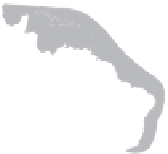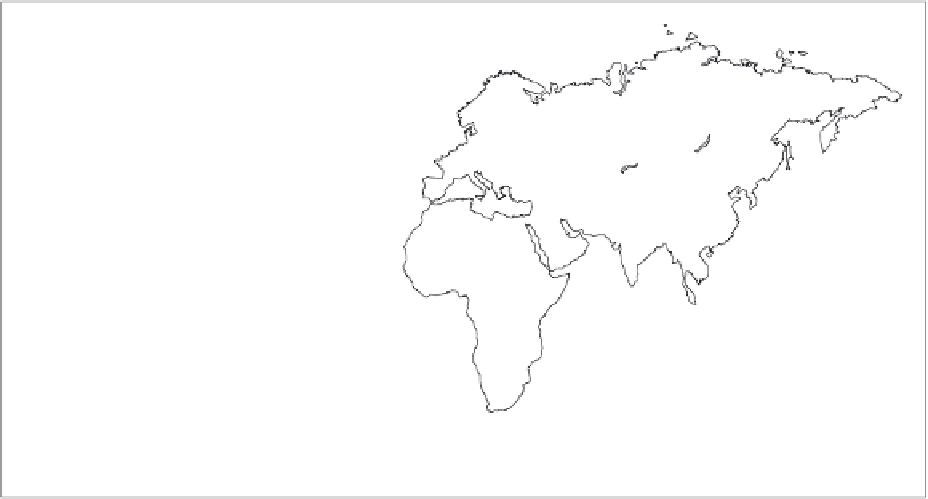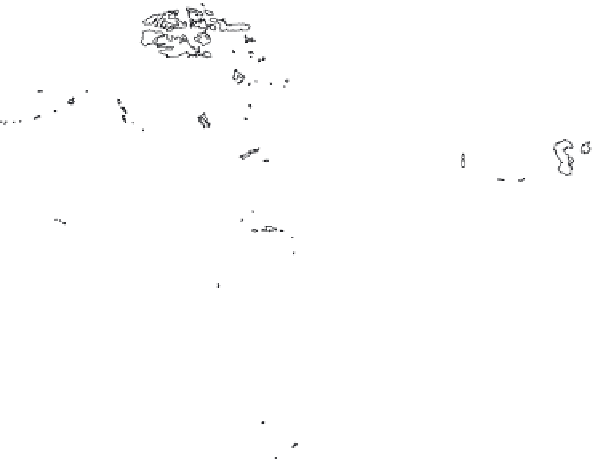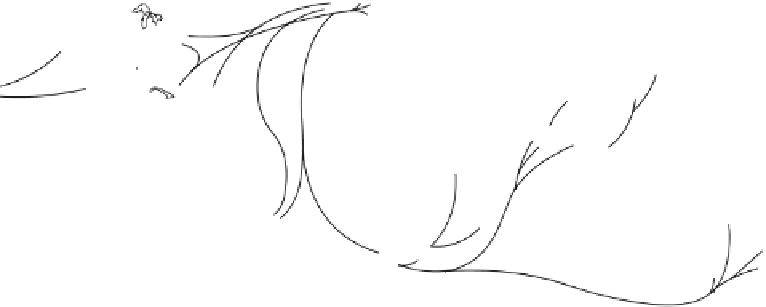Environmental Engineering Reference
In-Depth Information
distances and therefore are most likely to arrive at a site - are unlikely to produce
viable seedlings in the grassland setting. Thus, the larger seeds of species most likely
to do well need to be collected from elsewhere and carried in to the site. But Hooper's
team also discovered that shade cover greatly enhances tree seedling success - so
they suggest artifi cial shade should be provided at fi rst. The establishment of the
hand-planted species can be expected to catalyze forest regeneration, soon produc-
ing its own shade and assisting other species to establish. To increase biodiversity
once natural shade has been established, small-seeded species in the shade-tolerant
class (including
Genipa americana
and
Heisteria concinna
) can be introduced.
3.3
Species traits as
predictors of
invasion success
A number of species, plants and animals, have invaded widely separated places on
the planet, including the shrub
Lantana camara
(Figure 3.2), the starling
Sturnus
vulgaris
and the rat
Rattus rattus
. This prompts the question - do successful invaders
share traits that raise the odds of successful invasion (Mack et al., 2000)? If it were
possible to produce a list of traits associated with invasion success, managers would
be in a good position to assess the probabilities of successful invasions, and thus to
prioritize potential invaders and devise appropriate biosecurity procedures (Wit-
tenberg & Cock, 2001).
Here I take advantage of databases available for taxonomic groups where some
species are known to be successful invaders, and others not. These can be used to
shed light on the species traits associated with a high probability of invasion success.
My focus will be on pine trees in Section 3.3.1, New Zealand birds in Section 3.3.2
and parrots, plants and fi sh in Section 3.3.3.
1861
1809
1924
1807
1858
1821
1841
1856
1855
1914
1898
1924
1870
1883
1858
Fig. 3.2
The shrub
Lantana camara
, an example of a very successful invader, was deliberately transported from its native
range (shaded area) to widely dispersed subtropical and tropical locations where it spread and increased to pest propor-
tions. Year of arrival is shown where invasions have occurred. (After Cronk & Fuller, 1995.)






































































































Search WWH ::

Custom Search